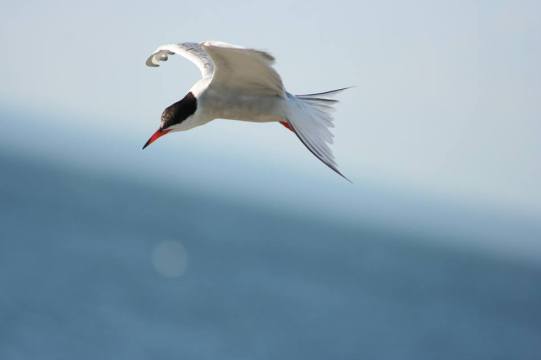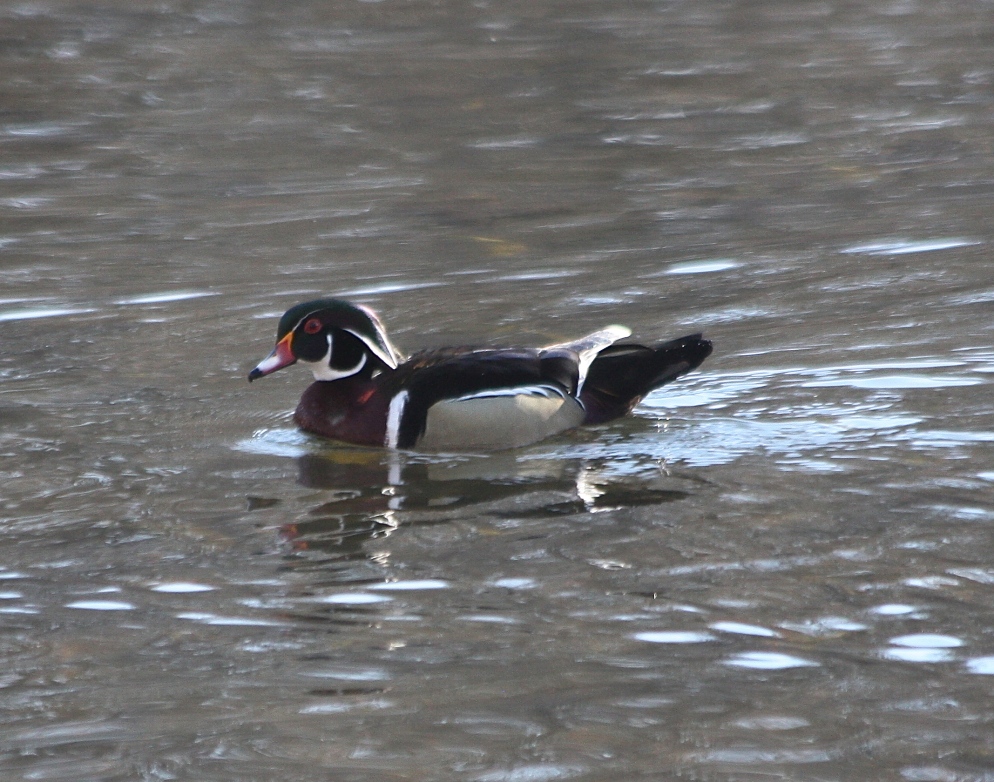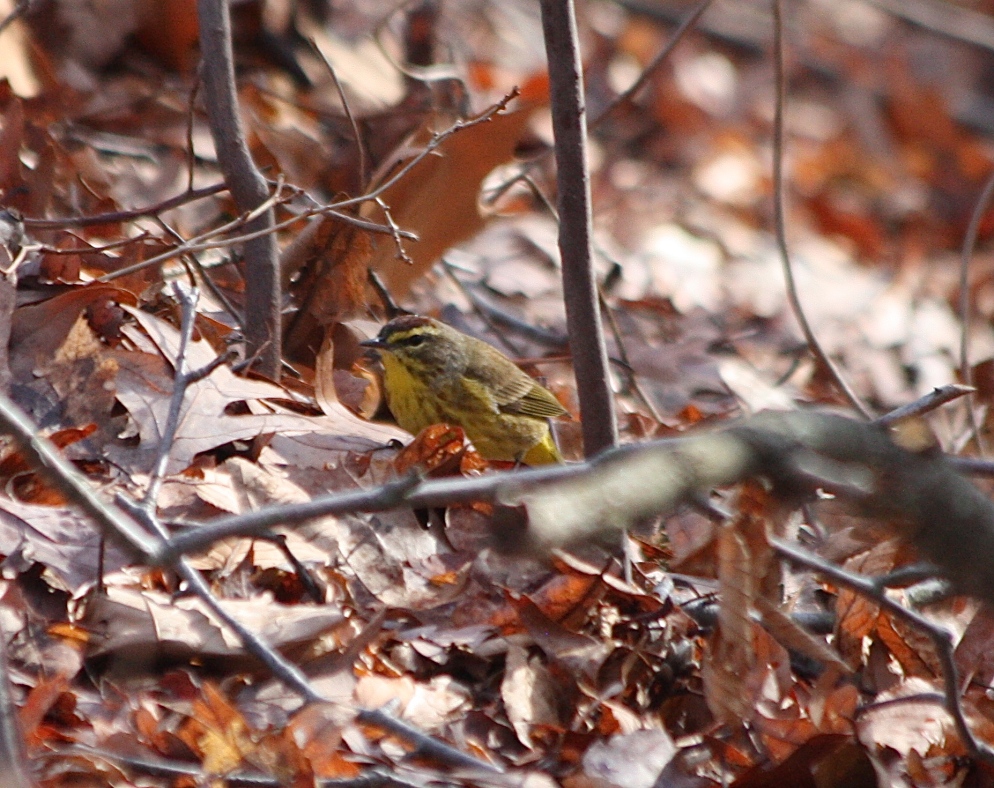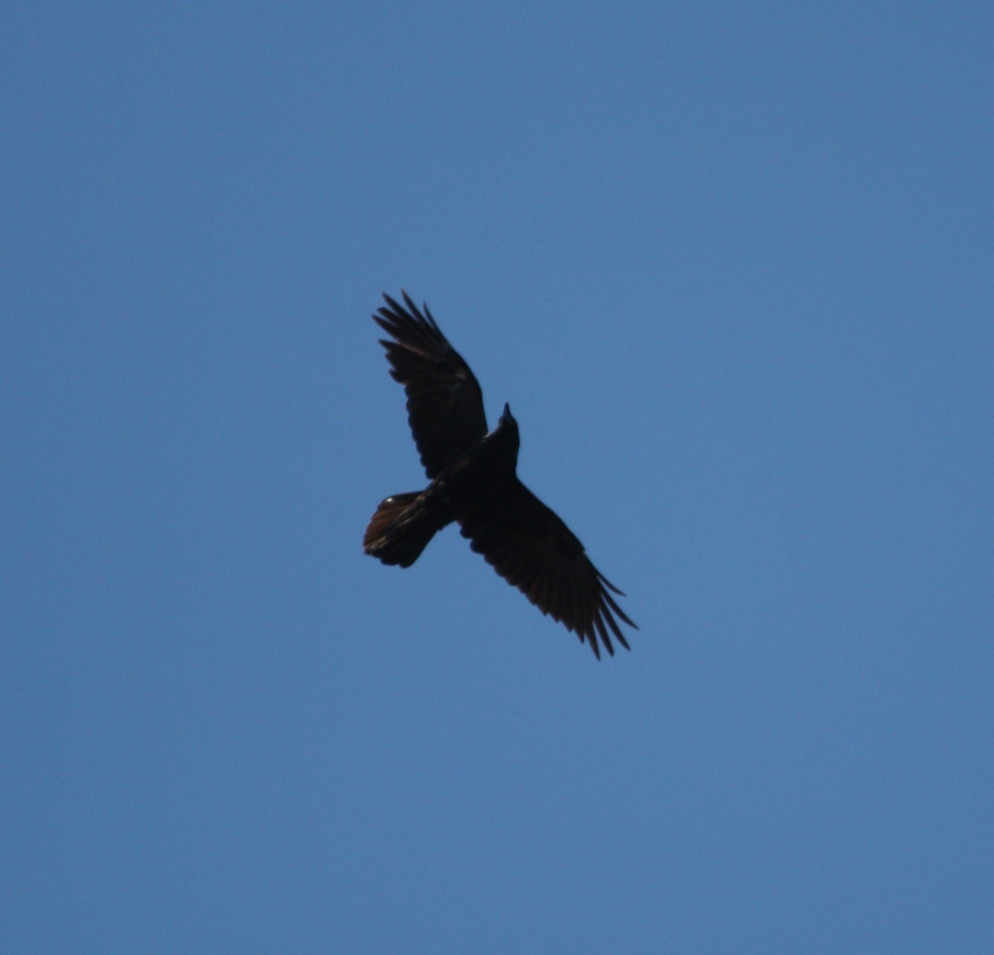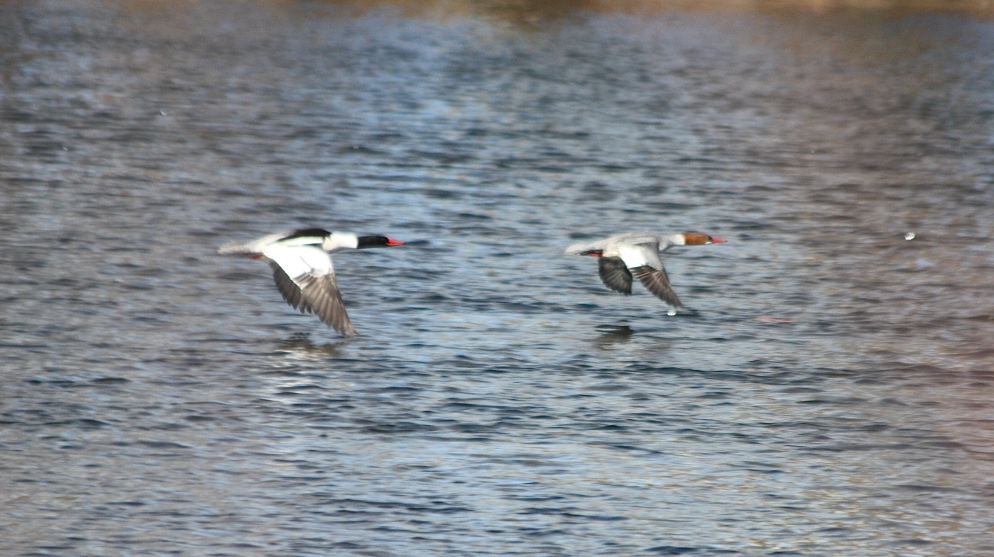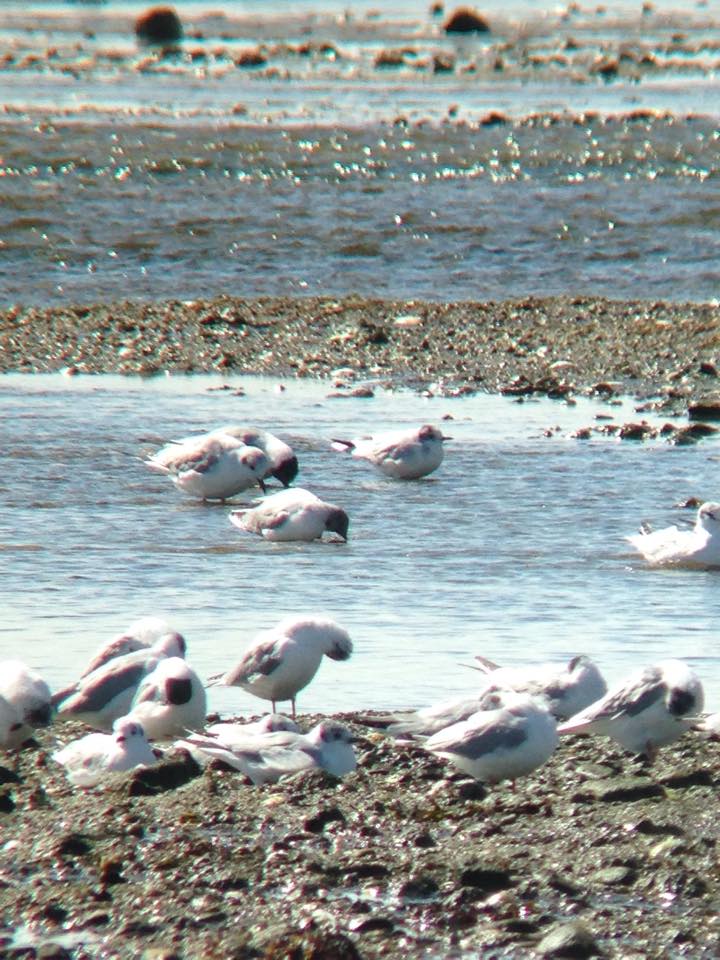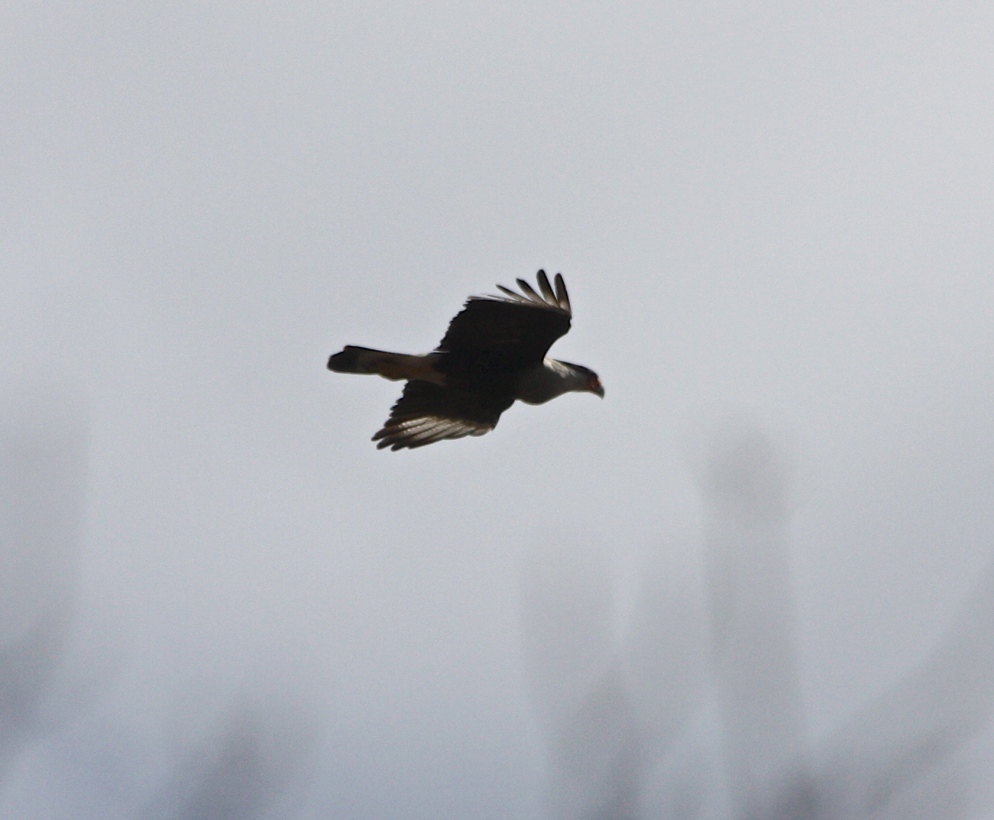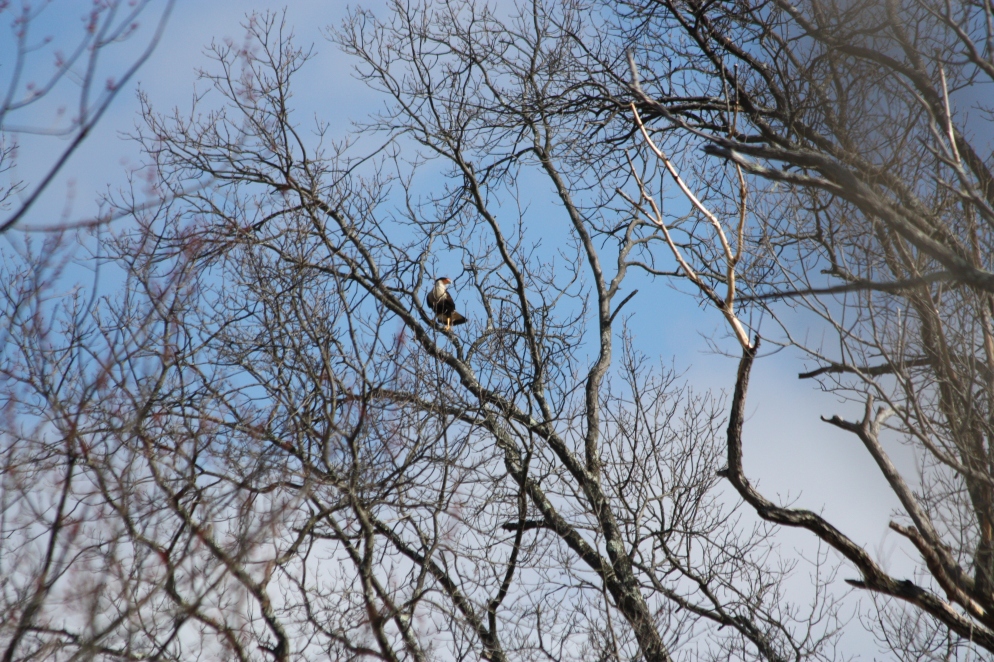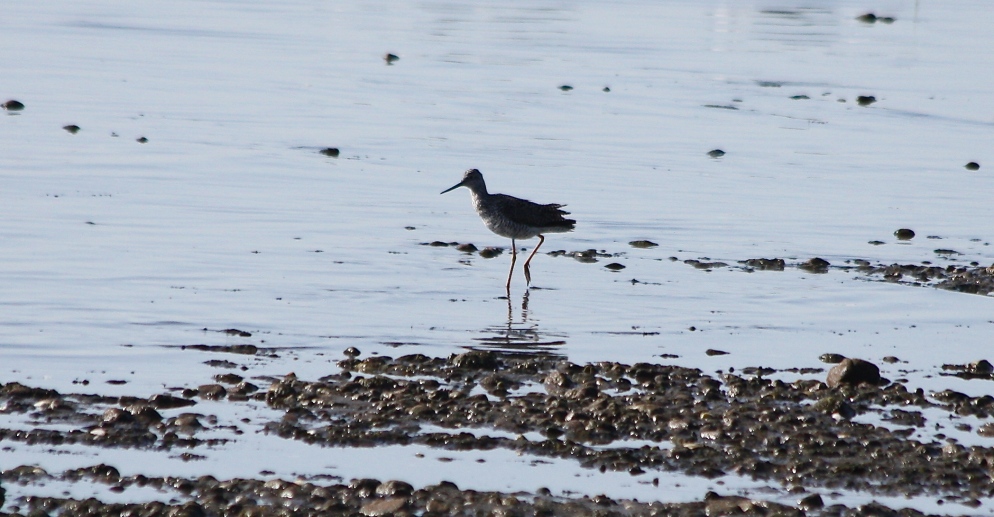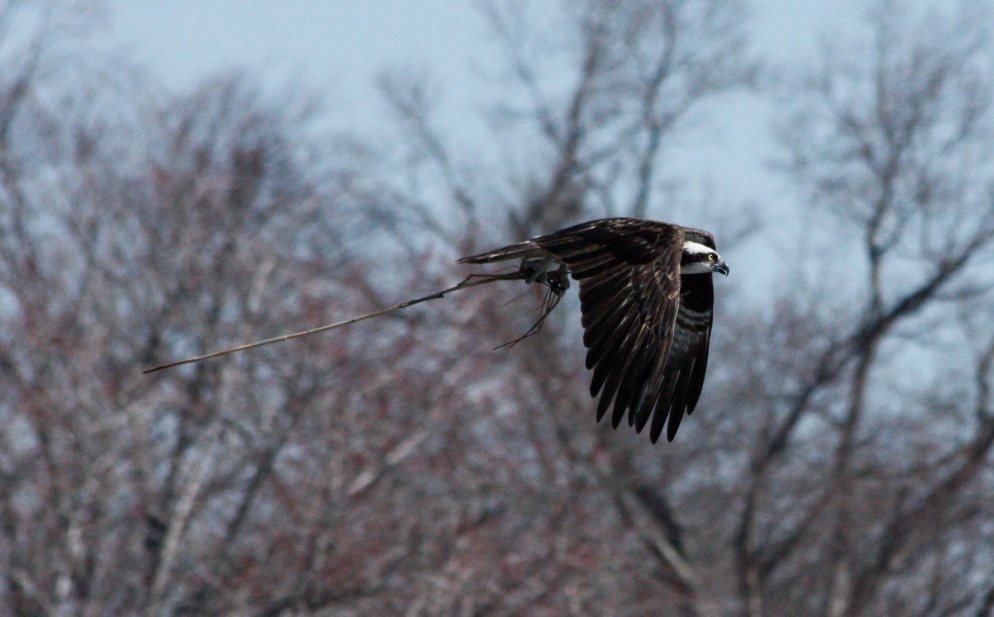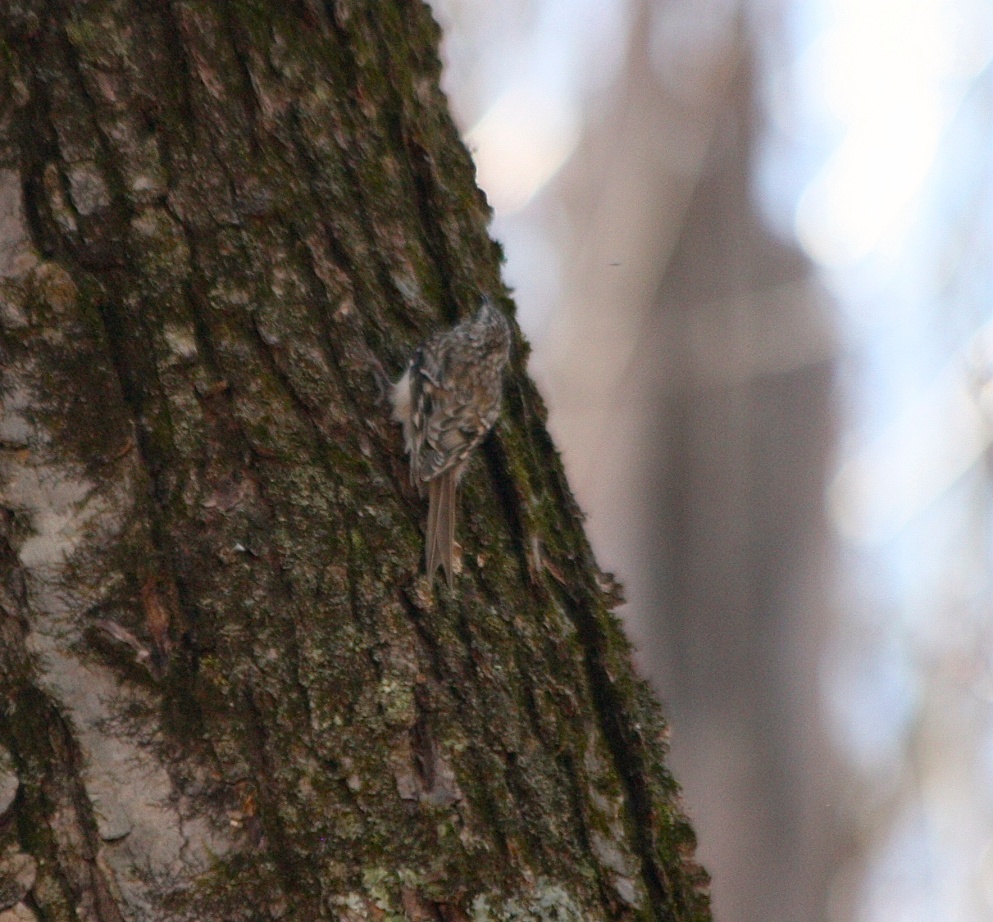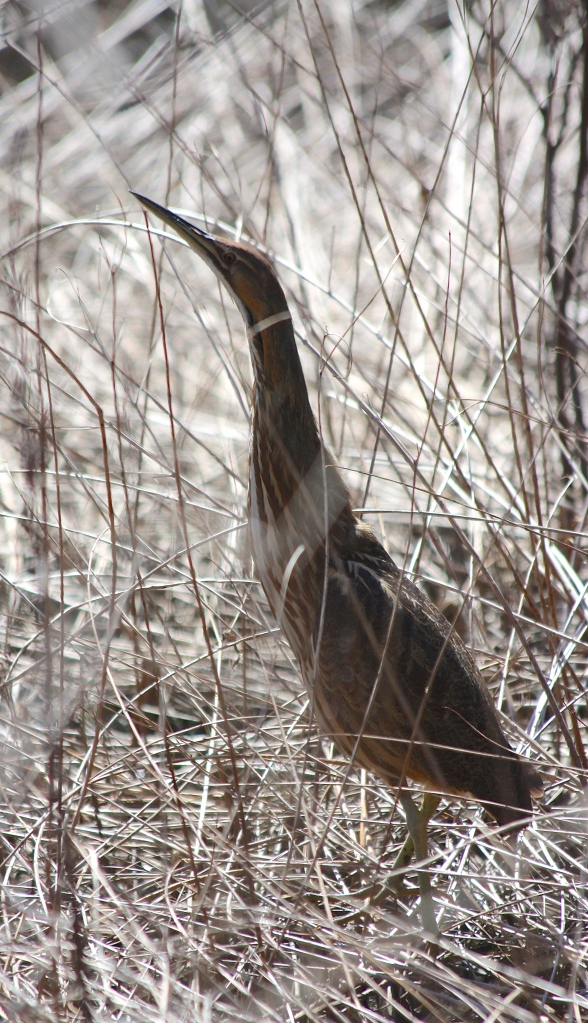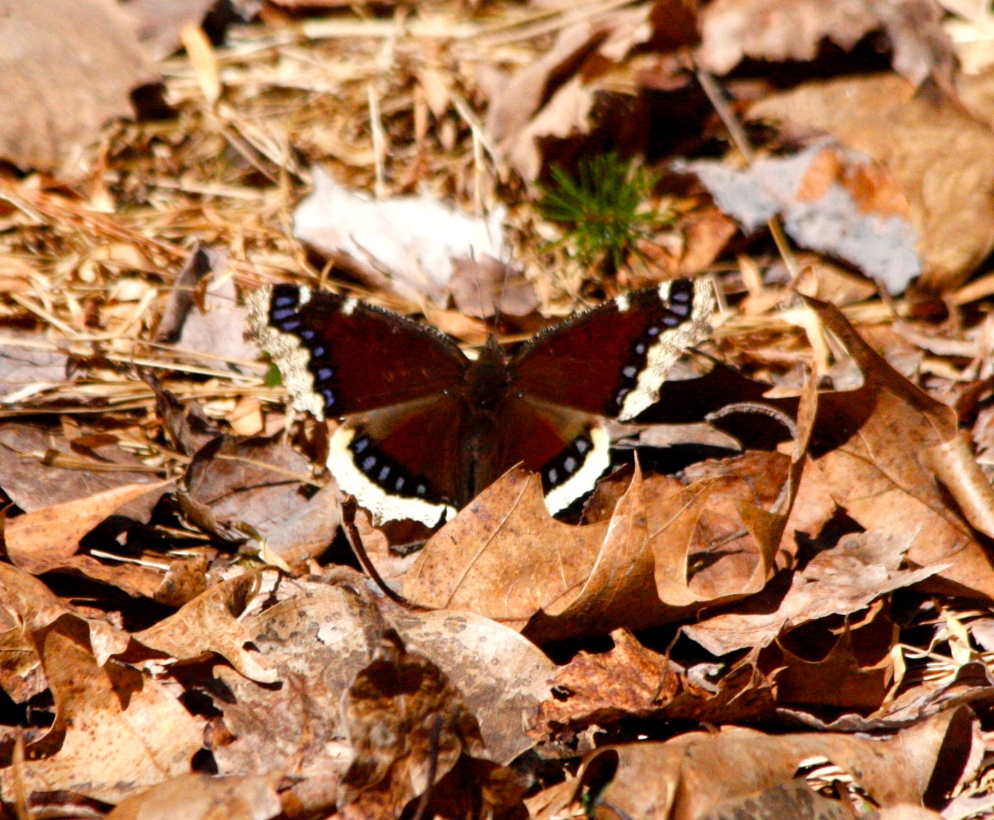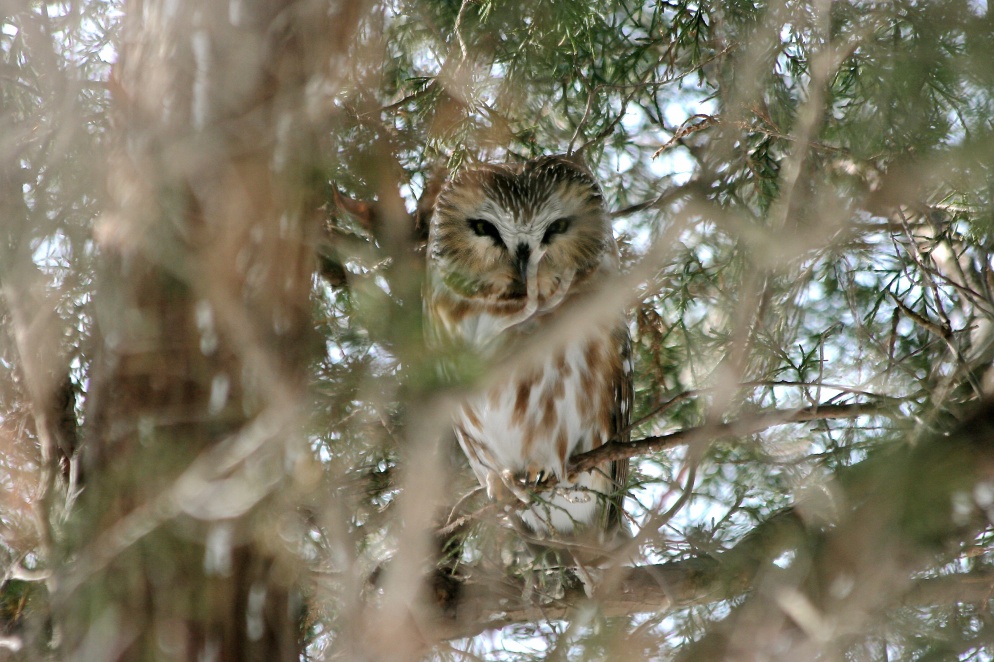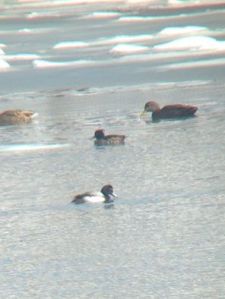Every May, birders from far and wide congregate in the state of New Jersey for an epic 24 hour birding marathon known as the World Series of Birding. The goal? To see as many species of birds as possible within the 24 hour slot (and get more than the competitors). The purpose? To raise money for bird conservation, promote birding, and celebrate New Jersey’s dazzling array of avian diversity. To sum it up, it’s one hell of an event.
I’ve been lucky enough to participate in the past five WSBs. For the past four years, I’ve been part of the New York State Young Birder’s Club’s team, the Razorbills. This year, along with teammates Eamon Freiburger and Silas and Joseph Hernandez, we set out for a big day within the confines of Cape May County (with Cape May itself being the crown jewel).
The forecast looked good, but during the drive down to Cape May on Friday night, it became apparent that the coast of southern New Jersey was completely covered in a dense blanket of fog, and it didn’t seem to be going anywhere. It was worrisome, but couldn’t put a damper on my spirits. Arriving at our campground around 8:30, we set up shop and I hopped in the tent for 2 hours of sleep. I woke up bright and early at 11:30 PM and ate “breakfast”, before meeting up with my teammates, loading our van, and heading out into the field. As soon as we got on the roads, we saw the fog hadn’t let up in the slightest. There was no way any migrants were moving overhead. This would prove seriously problematic, but we pushed forward to our first stop (Higbee’s Beach WMA) and hoped night birds were in a good mood.
Our first bird of the day was a Yellow-breasted Chat calling out in the meadow. It was soon followed by two calling Chuck-wills-widow and a Greater Yellowlegs calling in the distance. Otherwise, Higbee’s was pretty quiet, and we moved on. Swinging by Cape May Point State Park netted us Mute Swan and Canada Goose on bunker pond (visible in the lighthouse’s beam) and calling American Oystercatcher, Willet, and Laughing Gull on the beach. We then left Cape Island behind and headed up to the marshes on the Delaware Bayshore. Driving slowly along coastal roads by the marsh turned up Clapper Rail, Seaside Sparrow, Marsh Wren, and Red-winged Blackbird calling. Virginia and King Rails were not cooperating, and sooner or later we decided to head over to Belleplain State Forest, a major stop that we would stay at for the dawn chorus.
Belleplain at night is magical; it’s deep, dark, and always full of life. Whip-poor-wills and Barred Owls put on a show, a few Ovenbirds called out in the dark, and we even stumbled across an Eastern Phoebe calling by the lights of the Bathroom. Joe also picked out a Pine Barrens Treefrog calling, which was super cool to hear. Sooner or later, however, the forest began to wake up in earnest. Just as the faintest trace of light appeared in the eastern sky, American Robins, Eastern Towhees, and Wood Thrush woke up to sing, soon followed by Northern Cardinal, Common Yellowthroat, Blue-gray Gnatcatcher, Yellow-throated, Pine, and Worm-eating Warbler, White-eyed Vireo, Gray Catbird, and Great-crested Flycatcher. We had put ourselves in position to snag a local specialty as soon as it woke up, and sure enough, right on cue, a Prothonotary Warbler sang from the swamp in-front of us. We continued around Belleplain as the sun crept above the horizon (although not appearing- thanks fog!), and added bird after bird- Louisiana Waterthrush, Hooded Warbler, Carolina Chickadee, Black-and-white Warbler, Acadian Flycatcher, Scarlet and Summer Tanagers, Red-eyed Vireo, Eastern Wood Pewee, Blue-winged Warbler, and finally, a Yellow-billed Cuckoo. We swung by Lake Nummy, normally a good place for Spotted Sandpiper, but the beach was under renovation and no pipers were in sight. Fish Crow, Chimney Swift, Tree Swallow and Eastern Kingbird were new for the list, though. By 7:00 we were leaving Belleplain, ahead of schedule, and with 60 species under our belt. Windows down, we cruised along backroads to our next location, adding White-breasted Nuthatch, Prairie Warbler, and Indigo Bunting along the way. The Pea Fields, the most reliable spots for grassland birds in the county, were cloaked in dense fog, but we still managed to pick up Eastern Meadowlark and Bobolink. (Two of my favorite birds!). A couple Forster’s Tern passed overhead.
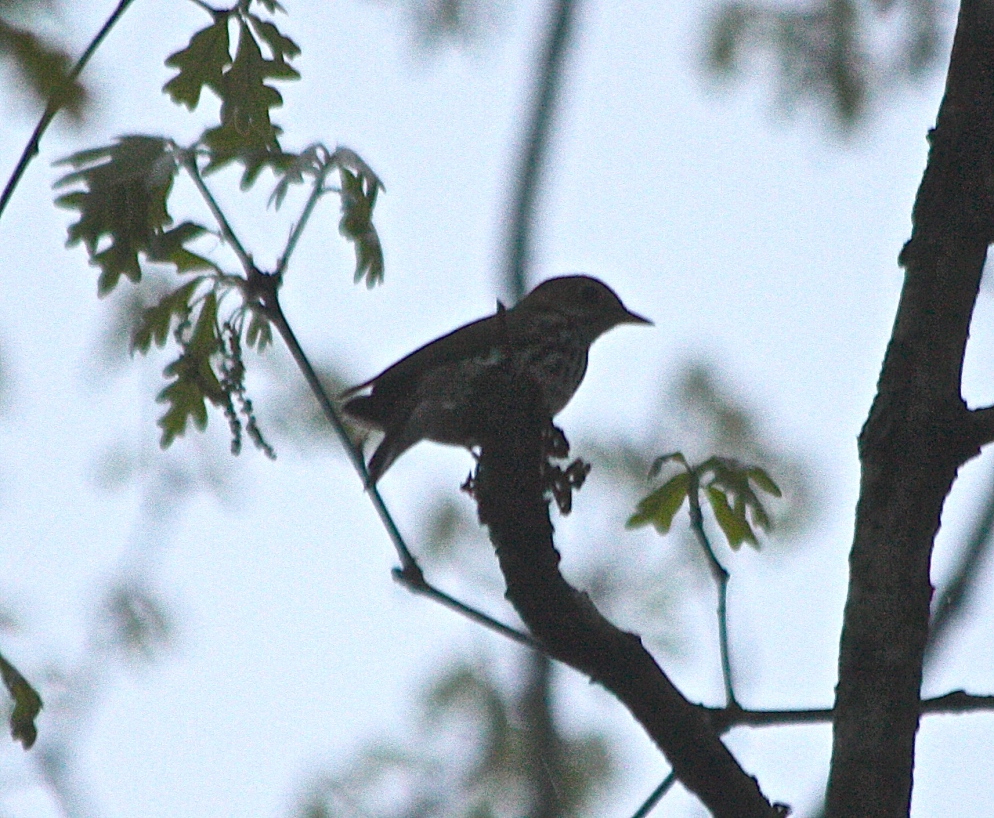
Belleplain had been lacking in migrants, so we headed over to Cox Hall Creek WMA, a good migrant trap. However, we were utterly disappointed; Cox was dead. Apart from a single Yellow-rumped Warbler, migrants were nowhere to be seen. This was a blow: migrant songbirds make up a huge part of a May big day. Worried, we left Cox quickly, but still managed to catch local Blue Grosbeak, Northern Flicker, Cedar Waxwing, Green Heron, and House Wren. We made a snap decision to reroute and head down to Cape Island in hope to pick up any migrants, if they were around. Along the way to Higbee’s Beach (again) we made a quick roadside stop for a reported Painted Bunting. No luck, but Black Vulture and Field Sparrow were small consolation. Arriving at Higbee’s, it was soon obvious that the migrants weren’t there, either. Trees that would normally be dripping with warblers were silent. However, don’t let my downer self ruin the fun- there were birds around. We added Northern Parula, Northern Rough-winged Swallow, and Orchard Oriole in the meadow, and I pulled out a lucky Wilson’s Snipe overhead. However, the jetty at Higbee’s was very productive. Lingering Purple Sandpiper and Gadwall were good to see, and flocks of Whimbrel, Short-billed Dowitcher and Least Tern passed over the breakers, above an active pod of Bottlenose Dolphins.
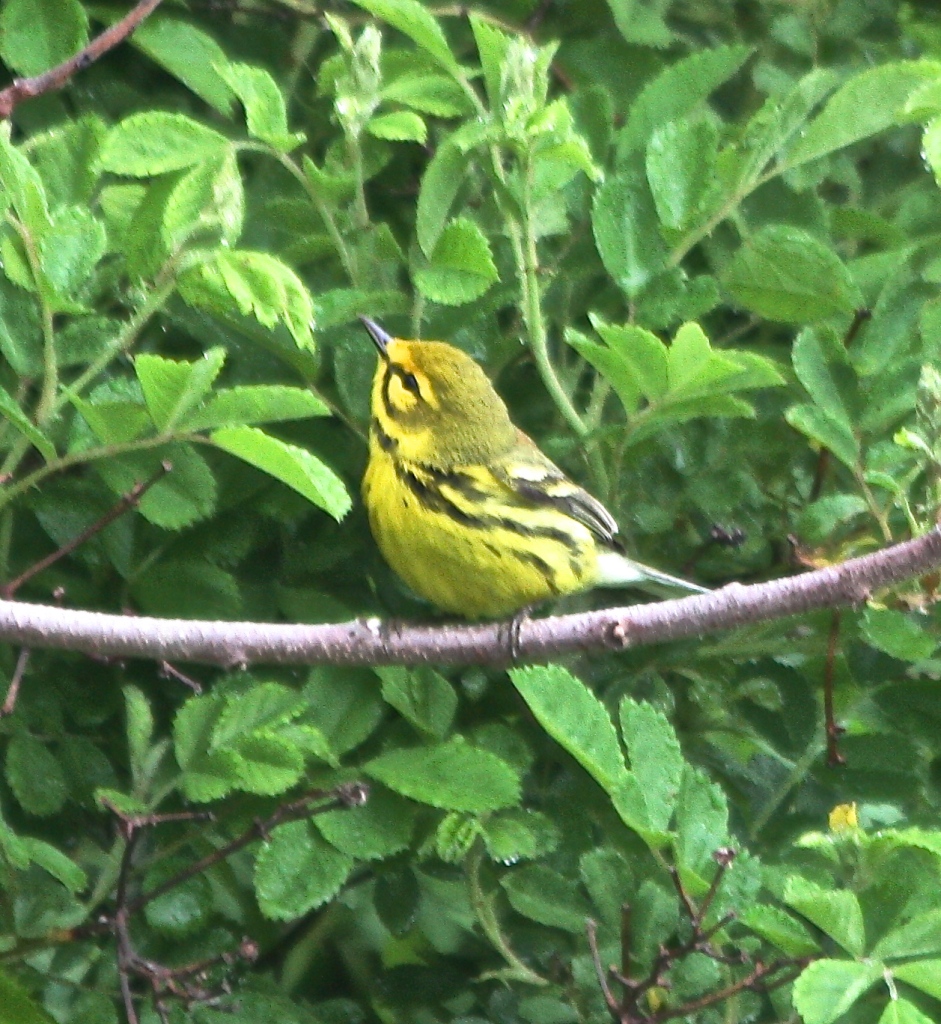
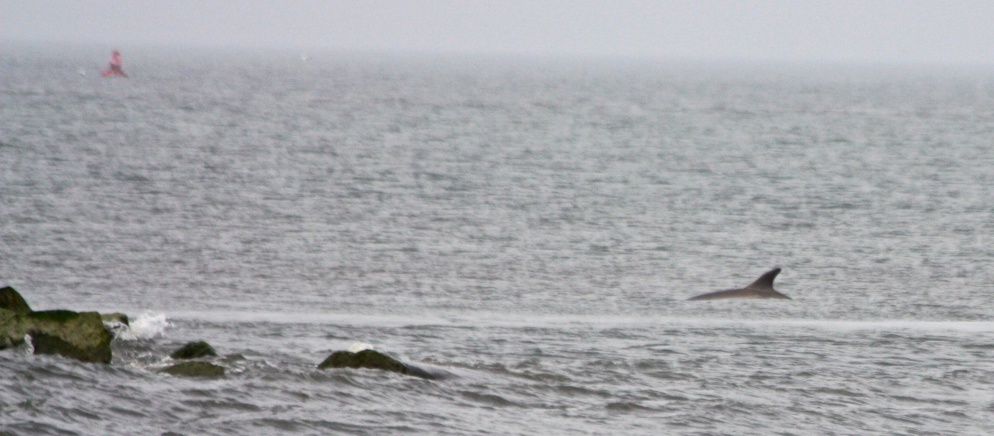
We then headed over to the CMBO center by Lily Lake to stock up on caffeinated beverages, and added White-throated Sparrow, Purple Martin, Snowy Egret and Blackpoll Warbler (finally, a migrant!) while we were at it. Next up was the platform at the end of the Coral Ave, where we did a sea watch alongside a fellow team, the Champions of the Flyway group from Israel. Here, new birds came fast and furious; Ruby-throated Hummingbird, Double-crested Cormorant, Boat-tailed Grackle, Glossy Ibis, Black Scoter, Bonaparte’s Gull, Common and Red-throated Loons, Common Tern, and best of all, a stunning adult Parasitic Jaeger that coursed through a flock of Forster’s Terns, somersaulting through the air in a spectacular display of piracy.
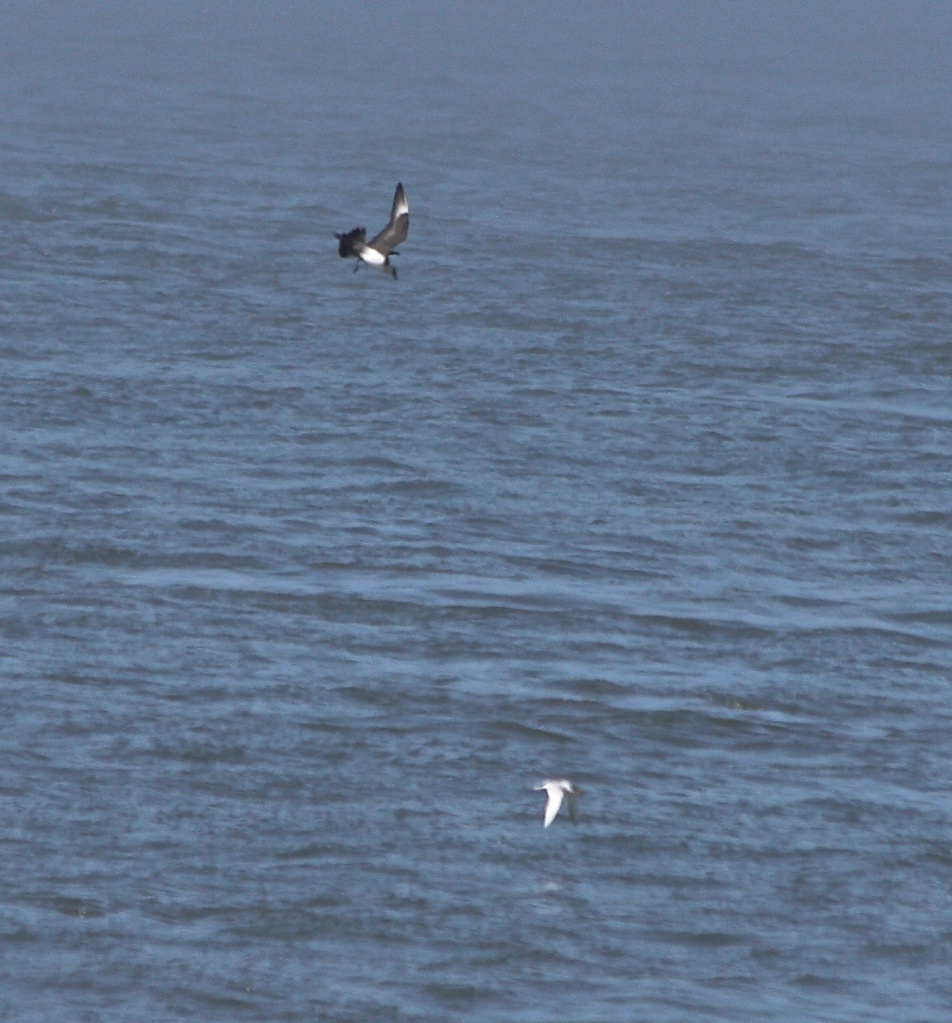
We quickly stopped at a pull off along the canal (adding a surprise Hairy Woodpecker) before our next stop, Cape May Point State Park. Starting on the beach, we picked up two lucky Black Skimmer flybys as well as a Bank Swallow and our first Great Egrets. We walked down the boardwalk towards Lighthouse Pond, marveling at the number of Turkey Vultures and Red-tailed Hawks above. While looking at a pair of Red-tails, I noticed two other birds circling a little ways above them. I did a double-take; they were Mississippi Kites! MIKI’s are becoming more and more regular in the northeast, especially during periods of Southeast winds in the spring, but seeing two together is always an incredible sight. We could hear cheers coming from the hawk watch platform, alerting us that they too had gotten the birds. In awe, we watched the birds circle directly overhead for a good 5 minutes or so, until they passed off to the west out of sight. High-fives were given all around– we had just gotten our bird of the day!
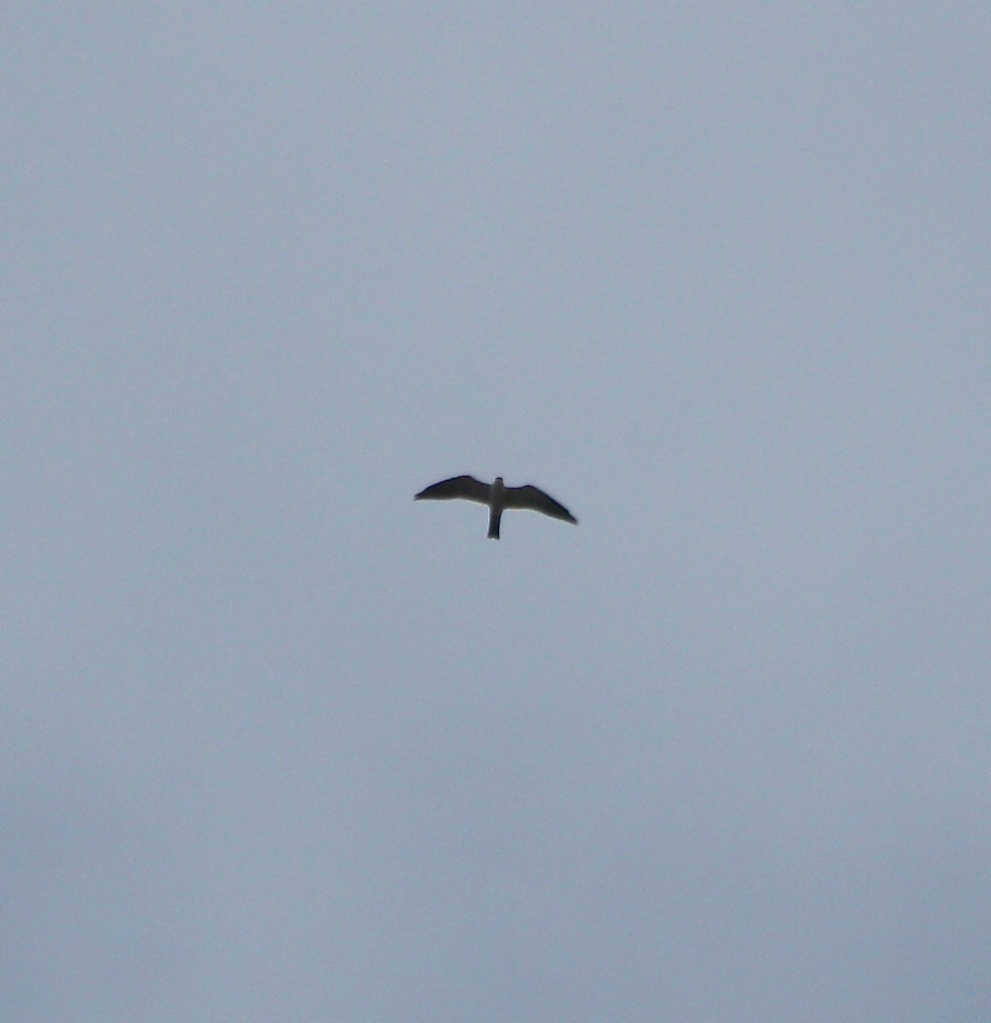
As we returned to the hawkwatch platform to congratulate other birders on the kites, Silas picked up a Cliff Swallow over Bunker Pond and an adult Bald Eagle passed overhead.
Moving next door to the Cape May Migratory Bird Refuge (“The Meadows”), we added Lesser Yellowlegs, Yellow Warbler (finally), Semipalmated Sandpiper, and Brown Thrasher. We took a quick lunch break, and headed north, back over the canal. Thanks to the local knowledge of one of our leaders, Herb Thompson, we swung by a roadside field with nesting Eastern Bluebirds. Then it was on to Reed’s Beach, a fantastic place to view the Horseshoe Crab breeding/bird feeding frenzy spectacle that happens along the Delaware Bayshore every spring. This is always one of my favorite stops; gull numbers are incredible (90% of them Laughing Gulls), and there are always nice shorebirds around. We added Least Sandpiper at a roadside pond and Ruddy Turnstone on the beach, as well as Ring-billed Gull, a tough bird at this time of year. Although not on the beach, a few mixed flocks of Red Knot and Dunlin passed by over the water.
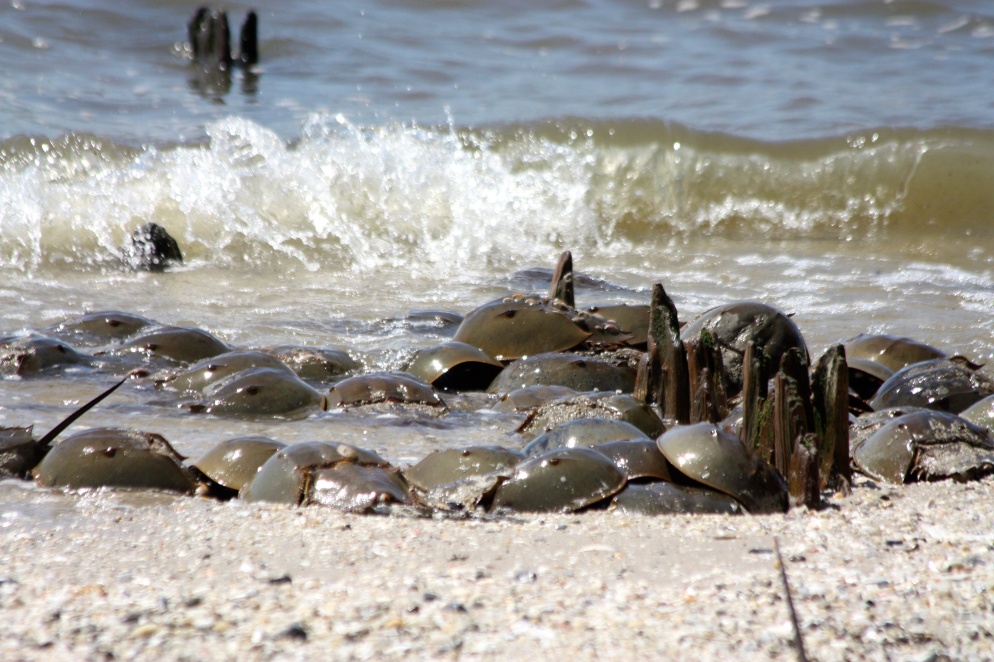
Now in the heat of the day, new birds were getting harder and harder to find. Our numbers were hurting due to the lack of migrants, and we knew it. We finally added a singing Baltimore Oriole on the side of the road and a Black-throated Blue Warbler in a field at Jake’s Landing. Sooner or later, we realized we had to leave the bay behind and traverse the peninsula to hit the marsh and beach of the Atlantic side of Cape May. Our original species goal of 150 species was leveled out to just 140, but we realized even that number could be a stretch. However, we were determined, and a few hours of daylight remained. The Wetland Institute produced Brant, Killdeer, Black-bellied Plover, and a flyover Little Blue Heron. We picked up Semipalmated Plover on the bridge over to Stone Harbor, and as another bank of fog rolled in we bolted out to Stone Harbor Point just in time to net Sanderling and Piping Plover before the beach was completely engulfed. We raced the advancing fog to Nummy’s Island, where some of our luckiest pulls of the day came in the form of two distant American Black Ducks, a flyby Peregrine Falcon, and a skulking Tricolored Heron. With only an hour of daylight left, it was time for some snap calls. We picked up Yellow-crowned Night Heron at the Avalon rookery easily enough, but our hoped for a sea watch were completely crushed by fog.
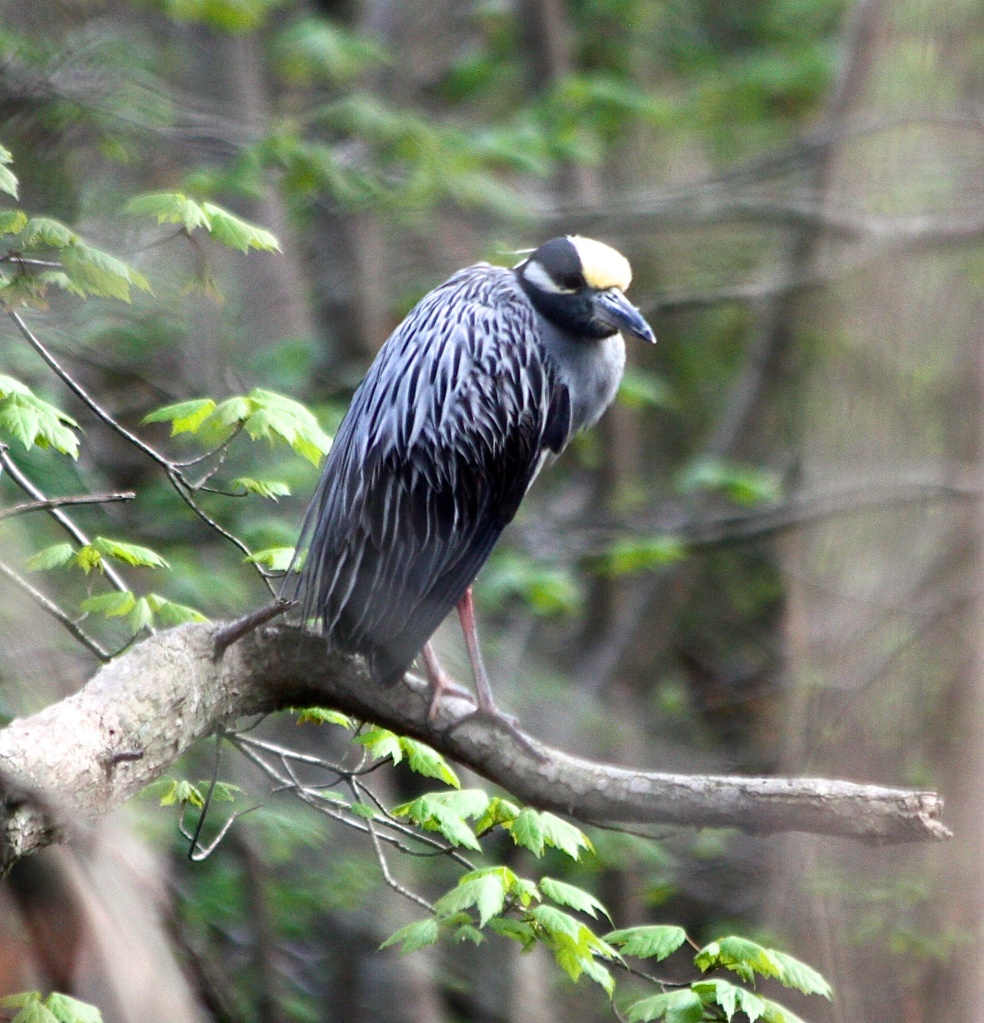
With the list sitting in at 136 species, 140 was looking tougher and tougher- we were running out of options. But there was hope. In the last vestiges of daylight we decided to head over to Jake’s Landing in hope birds would be moving over the marsh at dusk. At Jake’s, luck was on our side. A Savannah Sparrow (#137) hopped out of the grass, a Swamp Sparrow (#138) perched in a low shrub, and two Black-Crowned Night Herons (#139) flew out over the marsh. Right after the sun dipped below the horizon, we ran up the road to the field just in time to see an American Woodcock (#140) flush into the air. And last but not least, our final bird of the day came in the form of two Green-winged Teal flying overhead into the marsh as the last traces of light left the sky. We were relieved to reach our goal, and felt really good about the day, given the conditions. We birded for a little longer, hoping for Great Horned Owl or Virginia Rail, but the night was silent. We called it a day and headed over the finish line- another WSB in the bag.
Tallying up the list, we celebrated our luck with some birds: Mississippi Kite, Parasitic Jaeger, Cliff Swallow, Black Skimmer, Tricolored Heron, etc., and mourned the misses, most notably American Redstart, Black-throated Green Warbler, Belted Kingfisher, and Spotted Sandpiper.
It was a fantastic day of birding with some truly fantastic team members, in one of my favorite places on earth: Cape May NJ. To top it all off, I heard a Great Horned Owl in the campground right before I fell into a beautiful sleep. That’s birding, folks.
– Brendan
